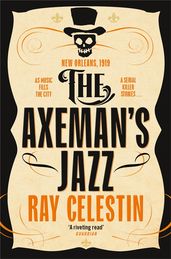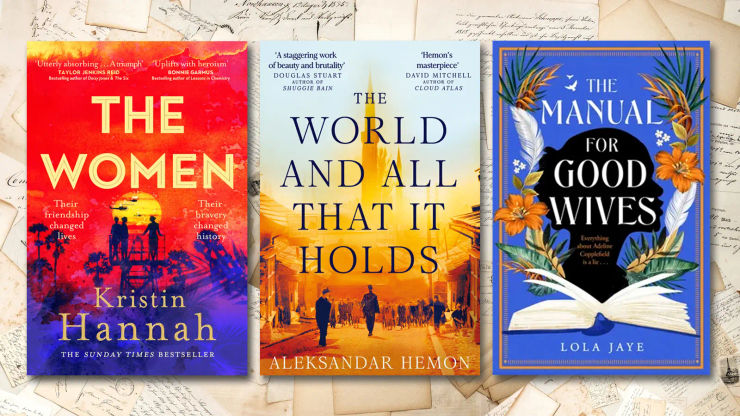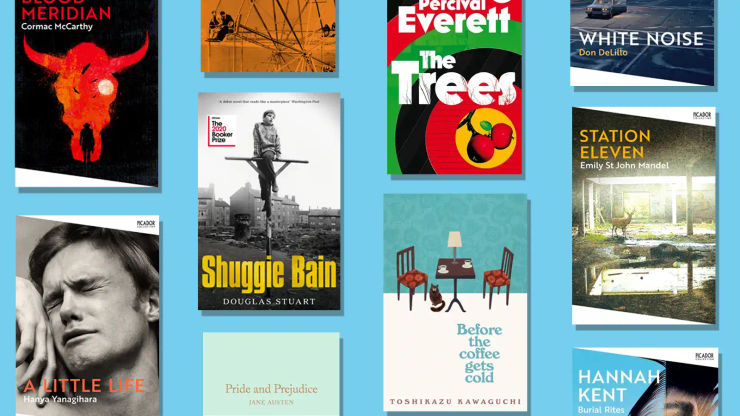The Axeman's Jazz and the Rashomon Effect
The Rashomon Effect is not widely known by name, though its principles are scattered throughout the great crime novels, films and, recently, television shows. Ray Celestin explains its influence on his novel, The Axeman's Jazz.

The Rashomon Effect is not widely known by name, though its principles are scattered throughout the great crime novels, films and, recently, television shows. Ray Celestin explains what it's all about and traces its history through the fiction of the past century, up to his own novel, The Axeman's Jazz.
My debut novel, The Axeman's Jazz, is based on the true story of a serial killer who terrorised New Orleans in 1919. New Orleans at the time was an interesting place, prohibition was just around the corner, the city was giving birth to jazz music, soldiers were returning from the War, race relations were being strained, and the public at large was becoming aware of a new European import to America – the Mafia. To fit in all the things that were going on in the city, I built the story around three different detectives, each from a different part of the social milieu, each trying to solve the murders individually, for their own particular reasons. The story is as much a ‘who's going to solve it' as it is a ‘whodunit', with each detective interpreting the evidence and clues according to their own pre-existing notions and prejudices – a good metaphor, I hope, for the prejudices underlying the race issues that the book also explores.
The idea of having different characters in a story giving conflicting accounts of what has gone on has a long history and a name – The Rashomon Effect. To quote Wikipedia, ‘The Rashomon Effect is a term that … refers to contradictory interpretations of the same events by different persons, a problem that arises in the process of uncovering truth.' A literary equivalent perhaps, to the uncertainty principle. The term is named after Akira Kurosawa's film of 1950, which itself was based on the author Ryunosuke Akutagawa's short story, In A Grove. In the short story, seven witnesses give evidence to a trial about the murder of a samurai and the rape of his female companion, yet each of the testimonies is so at odds with the others that eventually even the possibility of there being a single, objective truth to what happened dissolves completely. (To avoid confusing his audience, Kurosawa wisely cut down the number of witnesses to four in his film version).
The short story appeared in 1922, two years before E.M. Forster's A Passage to India, in which a crime may or may not have occurred in the fictional Marabar Caves between an Indian man and an English woman, who each have contradictory memories and accounts of the incident. Forster deftly makes the dark, empty void of the caves into a visual symbol for the unknowable otherness of the two races, and of truth itself.
The Rashomon Effect is somewhat evident in Agatha Christie's Five Little Pigs (1942) too, where Hercule Poirot has to listen to the accounts of five witnesses to a crime that occurred sixteen years earlier, and choose the truth between them based solely on what they tell him. In this instance, a single definitive version of the truth is eventually arrived at by the master detective.
Modern stories also use the device. 1997's An Instance of the Fingerpost by Iain Pears is set in seventeenth-century England and is split into four parts, each part a different account of a murder that took place years before in Oxford. Each account is by an unreliable narrator, and the title, taken from a work by Francis Bacon on empirical investigation and logic, belies the book's themes. Slightly less philosophical is Gone Girl (2012) by Gillian Flynn, which sets up a pair of differing accounts of a relationship gone awry, and a crime, and for much of the book, asks you to figure out who is telling the truth – the husband or the wife. And this year HBO's TV series, the spell-binding southern gothic True Detective, also features two detectives trying to reconcile to themselves and each other exactly what went on during a murder investigation nearly twenty years earlier. The series is set in the bayous and backwaters of Louisiana, as perfect a visual metaphor for the nebulous nature of truth as Forester's Marabar Caves, and Akutagawa's bamboo forest. True Detective's Louisianan backdrop brings us nicely back to The Axeman's Jazz which shares its setting – a watery-half world of swamps, rivers and lakes, voodoo priestesses, jazz musicians and Mafiosi – a perfect backdrop, I hope, for a mystery.
The Axeman's Jazz
by Ray Celestin
A serial killer stalks New Orleans in 1919 and issues an ultimatum: play jazz or risk becoming the next victim.
As the fearful city complies with his demands, three individuals are set on unmasking the killer’s identity. The Axeman’s Jazz features gruesome murders, a mystery and is based on true events. This is the first book in Ray Celestin's The City Blues Quartet.



